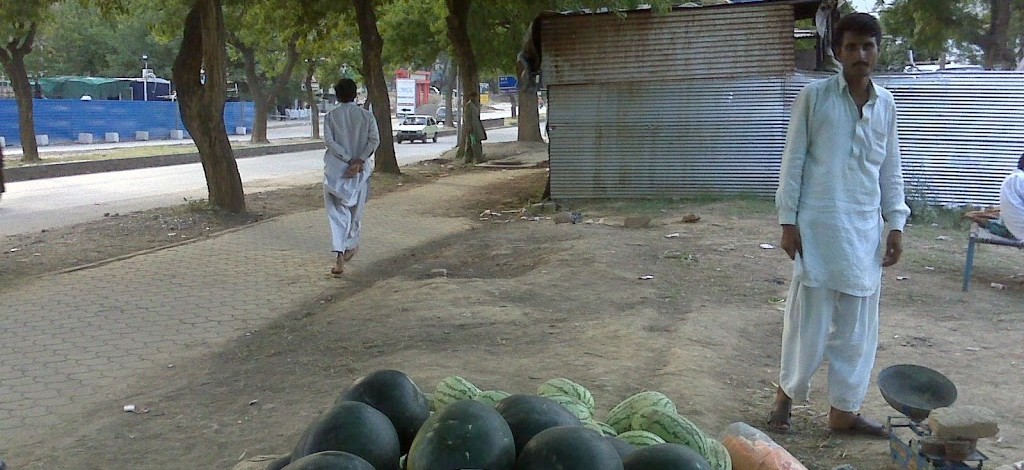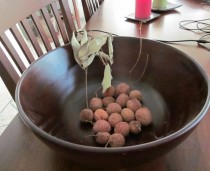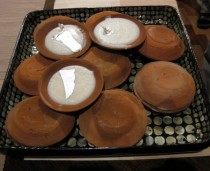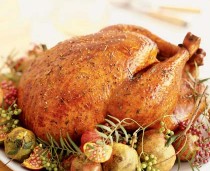For the last two years, I have made an effort to eat with the seasons. That means no strawberries in October, no apples in April, no tomatoes in December (when they are hard and smell vaguely like plastic…big sacrifice). If it isn’t immediately clear to you why those items don’t go along with those months, it only means that you live in the U.S. or a similarly developed country and you are a product of your Costco, have-everything-now, big box store environment. It’s true we can certainly have everything now. If by “everything” we mean perfectly shaped, tasteless fruits and vegetables and the crazy desire to fly asparagus in from Chile in August even while a bounty of sweet corn, rich red peppers, or juicy cantaloupes are easily plucked right in your own state or even town during that same month.
I understand you’re pretty busy and just reading this blog may count as your requisite non-fiction for the month. You’re probably not overly interested in reading “Omnivore’s Dilemma” or any of the other excellent books on this subject. In that case, just trust me when I say there’s a better way.
As soon as I realized that the way we eat in the US is crazy, I decided to stop. I became a member of a collective farm so I could be assured of a hearty share of fruits and vegetables from June to January even in climate-challenged New England. Eating produce in season instantly transformed me into a magically fantastic cook and a very, very happy eater. It just smells and tastes way better, like someone took regular supermarket food and turned up the volume. I started to eat lots of squash and sweet potatoes in the fall, which happen to go great with the onions and garlic that are ready to eat then, and the apples and pears that are at their sweetest, fullest best. I ate pomegranates and cranberries in early winter, and stuffed myself with asparagus and delicate baby greens in the spring. Sure, I cheated some of the time: I could never get into the habit of making smoothies without bananas (which are never in season in Massachusetts), or occasionally being lured in by the gleaming displays of non-seasonal whatever in the Whole Foods super-lux produce section. But I tried, and it was good.
What does this have to do with living in Islamabad? Like everything, another surprise. Even though in the U.S. eating locally and seasonally pretty much brands you as an over-educated, privileged member of the intellectual/liberal elite, it turns out that this new “trend” in the U.S. is the only way to eat in Pakistan. Despite that whole untreated tap water and occasional scary bacteria thing, the people in this country actually eat less crazy than we do. If it isn’t in season here, don’t bother looking.
When I first arrived in April, fresh strawberries were everywhere. It was “strawberry festival” time at every restaurant, every waiter started his spiel with, “Would you like a fresh strawberry juice?” and a local economist we know here loaded our team up with a crate of fresh berries to take back to the guest house when we visited his farm. By mid-May, they had disappeared.
Next came watermelons. Piled up on every dusty corner and available for ridiculous prices like a buck apiece, big fat dark green melons were all over Islamabad in May and June. And not your sissy little seedless varieties, either. Juicy, red hunks of melon with jet black seeds became my favorite afternoon snack in the office, and it was a tall, cold glass of watermelon juice that I started drinking every night with dinner. Then, just as quickly as they had arrived, watermelons were gone too.
Now we’re firmly in mango territory in Islamabad, and it is heaven. I didn’t like mangoes until about two years ago, because every one I had ever encountered was stringy, hard, and pretty tasteless. Then I received a lesson on how to cut one up (thanks Anna!), tasted a good one, and fell in love. Pakistan has very strong feelings of pride about its mangoes, and with good reason. They are so sweet they taste like cool, orange candy, and in the humid hell that this country has turned into as of the beginning of July, they are a saving grace. I just polished off a mango tart for breakfast, yesterday I had a mango shake after lunch, and tonight I am definitely going to cut a few up for myself and eat them in chunks in an air-conditioned room. I will eat mangoes until I practically turn into a mango, because I know, like the strawberries and watermelons before them, they will soon be gone.
I could weave some elaborate metaphor here or throw in some carpe diem type phrasing, but I think the message is pretty obvious all on its own: enjoy what you have while it lasts, experience life fully, eat all the mangoes you can.












10 Comments